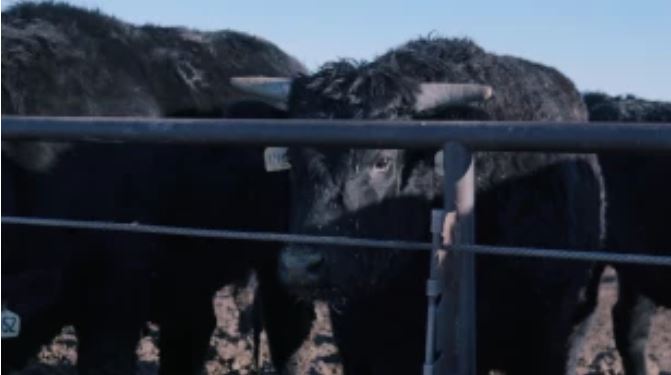How One Cattle Rancher Ditched the Industrial Meat Model and Forged a More Sustainable One

Cami Koons
ckoons@flatlandkc.org
Mike Callicrate and his son Teegan are hardworking ranchers. But they aren’t typical.
Almost 30 years ago, they bucked an industrial food production model focused on maximizing output. Instead, they focused on raising healthy cattle without the use of growth hormones or drugs and selling the meat directly to local consumers.
If producers expect to live off the land, they must find a place to sell their products, said Teegan Callicrate, Mike’s son who oversees the Callicrate Cattle Co. ranch, feedlot and slaughter operation in Saint Francis, Kansas.
“Ideally, they should be sold locally and go back to people in the communities that they come from,” Teegan Callicrate said. “That’s what I think this design can do for many communities across the world.”
Flatland on YouTube
The Callicrate family’s integrated approach of raising, processing and selling meat directly to consumers proved to be durable during the COVID-19 pandemic. When meat aisles at most grocery stores were empty due to supply chain disruptions, Mike Callicrate said his operation never “missed a lick.”
Besides creating a more resilient local food chain, Callicrate’s approach is more environmentally sustainable.
In his travels between Colorado Springs, Colorado, where the Ranch Foods Direct processing and retail operation is headquartered, and the ranch in Saint Francis, Mike Callicrate sees dry riverbeds and large-scale farming practices that turn his stomach.
His operation strives to give back to the soil and not pump excess water from the ever-shrinking Ogallala Aquifer.
“When you consider that all wealth comes from the soil, let’s put together models that build soil rather than deplete soil,” he said.
That means rotational grazing for cattle and feeding them grains that are locally grown without chemicals or genetically modified seeds. The company also composts all its slaughter waste and turns the bones into biochar that goes back into the soil.
It’s all part of an effort to rethink the food chain in ways that make it more resilient and sustainable.
“And I think it’s these kinds of models that do that,” Mike Callicrate said.
To learn more, watch the first episode in a new Flatland series focusing on the food chain, “Harvesting Change,” part of a PBS climate change programming initiative
Original Post: Harvesting Change: Making a Local Meat Market













The Callicrates are making a real difference in helping ranches get a fair price for their production. Thank you for all you have done.
A bit off topic – yet relevant.
For Your Review: The Avian flu [ HOAX ] is devastating farms
https://newhumannewearthcommunities.wordpress.com/2024/02/03/the-avian-flu-hoax-is-devastating-farms/
Do you have any information on where I can find something like this back east? I live in Virginia and would love to be able to source something like this.
I was hoping someone would respond with some ideas, unfortunately, except for Callicrate Cattle Co. and Ranch Foods Direct, nothing like this exits anywhere that I know of. We need to build new marketplaces owned by the makers (not rent collecting food halls) who buy from local producers. I think this is the answer to rebuilding communities and restoring good health. See https://nobull.mikecallicrate.com/2024/01/15/cowboys-can-save-the-world/
Please provide a list of restaurants that use your meat exclusively. I select restaurants
accordingly. Sad to learn that Drifters is no longer using your meat.
Have you approached JB at Lumen8 downtown? They are quality oriented.
Best regards..
Janet Marletto
Hi Janet, here is a list of our restaurant partners: https://ranchfoodsdirect.com/restaurant-partners/